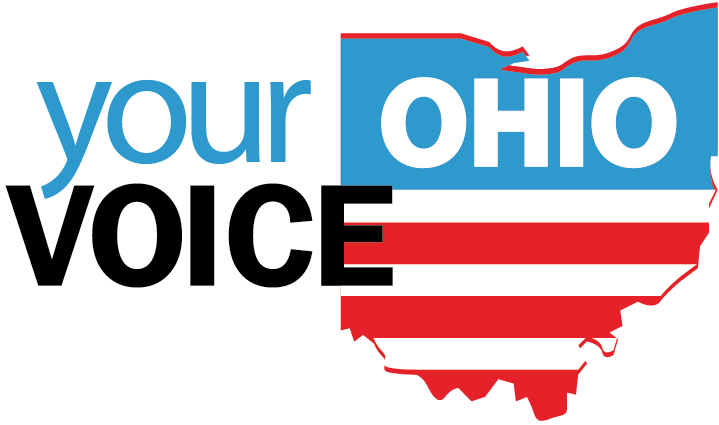1. Newsrooms can help bring people together
Thanks to the support and efforts of our media partners we were able to host more than two dozen community dialogues on addiction and economic vibrancy issues, which have consistently generated positive responses from reporters and community members alike.
We found that the structure of the community forums and citizen juries were effective for:
- Digesting complicated issues
- Generating useful feedback of existing reporting
- Identifying creative solutions that aren’t being talked about by policymakers
- Illuminating information gaps or myths
- Meeting new sources
- Drawing out key themes within a community
- Connecting community members and journalists (journalists seen as “real people” in the community)
2. Engagement generates results
When newsrooms invite their audiences to help shape their coverage, we’ve seen great things happen. The media has the unique opportunity to provide a platform for the public to communicate their concerns, opinions, and needs; and to have the opportunity to interact on these issues.
Dayton Daily News Reporter Katie Wedell attended three Your Voice Ohio forums, focused on addiction, in southwest Ohio. Her paper has covered the opioid epidemic for years, and it became Wedell’s full-time beat in 2017. She told The Lenfest Institute that one of her biggest takeaways from participating in the program was that she was able to get a better understanding of the coverage that readers wanted.
“We came out of those sessions with a big, long list of things people wanted us to write about…Some of it was things that I hadn’t even really thought of,” she said. “Some people were still confused about what an opioid is… We forget sometimes that when we’ve covered something for so long that some people are new to the story and don’t know what we’re talking about. The big thing that we took and have run with is that they really want to hear positive stories. We want to hear stories of people recovering, stories of hope and the good things going on, not just who overdosed that day or how many deaths there were that week.”
3. Engagement generates understanding
An important finding emerged by sitting with people: Journalists, public officials and experts are almost all college educated. Seventy-five percent of Ohioans are not, yet they are experts in their own right. Their expectations and experiences are far different from those of us who control government, journalism and institutions. This understanding is important to rebuilding trust.
Overall, we saw journalists walk away from each event with a clearer understanding of the challenges faced by their community and a new orientation toward reporting on those issues in service of community members. We also saw community members come away with a clearer understanding of the challenges faced by journalists and an appreciation for the work of journalism.
Youngstown Vindicator Reporter, Jordyn Grzelewski, was quoted by The Lenfest Institute, after attending Your Voice Ohio forums, saying: “We were really participants in the sessions, rather than observers. I think it let people know that we are part of the community too and we do care about this. We live in this time when people aren’t super trustful of journalists and it was a really good engagement thing to do to sit at tables with them.”
4. Combine digital + in person outreach for best results
While we saw success with digital tools in denser urban areas, digital engagement efforts were not always the most effective option for reaching key audiences. Perhaps unsurprisingly, in the rural areas of the Mid-Ohio Valley along the Ohio/West Virginia border, we found that outreach via our community partners was far more effective in building awareness of community events and issues than other approaches.
We saw a similar lesson play out in the Marietta-Parkersburg area, media participants learned that community organizers can be great collaborators. Citizens helped spread the word of community meetings, obtained funding for hall rental, made cookies, and after they heard the conversations, took action to fix problems; emphasizing the need to map and connect with local networks in order to reach diverse audiences and bring about action.
5. No more doom and gloom, people want SOLUTIONS!
One of the biggest sentiments that we heard again and again was that people were tired of hearing journalists chronicle how bad their lives are. For example, when it came to covering the opioid epidemic, we saw that too often, reporting prioritized and focused on weekly overdose statistics, but didn’t provide the information and focus to help communities actively find and adopt solutions. In 2018, we learned that this type of coverage was simply no longer resonating with audiences, leading to disengagement, apathy, or outright hostility towards opioid reporting.
Above all, when it comes to difficult topics like this, people want us to give them good information and solutions for improving their lives and their communities; whether that means compiling and distributing resources for people struggling with substance dependency and their families,
- How To Get Help: An Opioid Addiction Resource Guide, WYSO
- Recovery group to connect locals with addiction resources, Williamson Daily News
- Where can people turn when loved ones need help?, Your Voice Ohio
- Resources for those battling with addiction, WKYC3
- Support for families of those addicted, WFMJ 21
- Exploring employment resources for people in recovery, Your Voice Ohio
Or specifically highlighting and exploring the impacts of potential solutions.
- Drug crisis in Ohio: What solutions are making a difference?, Dayton Daily News
- Potential solutions to the opioid epidemic, WFMJ 21
- Sheriff’s department to launch overdose quick-response team, The Vindicator
- #MyOpioidPledge: How a Dayton hospital network is trying to get personal to battle overdoses, Dayton Daily News
6. Collaboration Helps Stories go Further
We’ve all heard the famous proverb “alone you can go fast, together you can go far.” Well, this past year we saw more stories going further with increased collaboration. For example, many of our YVO media partners were able to write an assortment of stories by working with our YVO data contributor, David Knox, and the economic data he provided that gave reporters brand new insights into the ins and outs of Ohio’s economy. This collaboration led to stories like these:
- Despite Job Growth, Most Ohio Counties Lag, Data Show, WYSO
- Glimmers of hope in a community of crumbling buildings, Your Voice Ohio
- A tale of two economies: Mercer, Monroe counties’ success and struggle offer lessons for Ohio, Cleveland.com
- Across Ohio, community assets are also community needs, Your Voice Ohio
This past year, we also were able to expand beyond the scope of opioids and the economy, thanks to Plain Dealer investigative reporter Rachel Dissell. Taking note of the existing YVO network of media collaborators, she asked YVO to set up initial phone conversations so that she could share the PD’s powerful research on rape kits in exchange for help from other news outlets. The result was simultaneous publication by several news outlets.
- Rape in Ohio: Test kits yield few cases that end to trials, newspaper investigation shows, Cincinnati Enquirer
- Ohio rape kit results not always investigated, Newark Advocate
Which takes us to 2019-20. We want to save journalism by rebuilding trust in local media. How? Become conveners, listeners and catalysts through experimentation, collaboration, transparency and showing that we are real people who care about the communities we serve.





